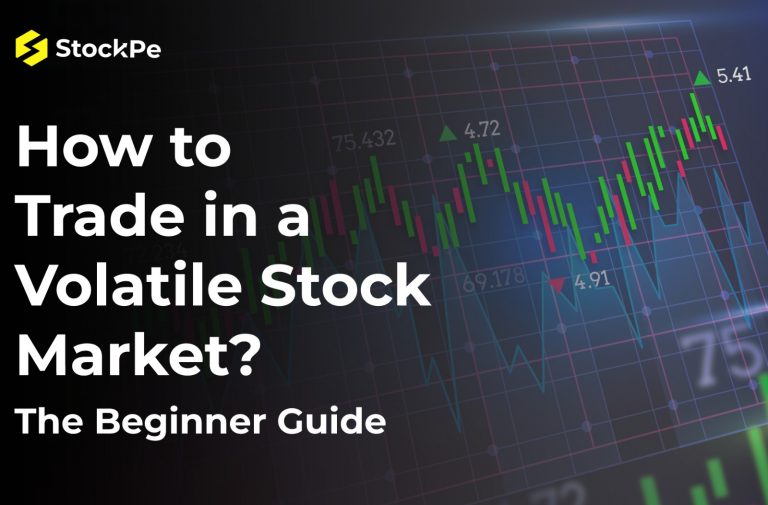As a highly successful trader, you need to develop a set of habits that will help you navigate the unpredictable and often volatile world of the stock market. In this blog, we’ll discuss the 10 habits of highly successful traders that have proven to be effective over time. These habits include having a trading plan, implementing proper risk management, understanding the market, having a trading strategy, being a student of the market, and more.

Have a Trading Plan
One of the most important habits of highly successful traders is having a trading plan. This is a document that outlines your goals, trading style, risk tolerance, and other important factors that guide your trading decisions. Having a trading plan helps you stay focused and disciplined, and helps you avoid impulsive decisions that could lead to losses. Your trading plan should be regularly reviewed and updated as needed to ensure it remains relevant to your goals and current market conditions.
Implement Proper Risk Management
Another habit of highly successful traders is proper risk management. This involves setting stop-loss orders to limit potential losses on losing trades, and limiting the size of your trades to a percentage of your overall portfolio. Proper risk management is critical to protecting your capital and ensuring long-term success in the markets.
Understand the Market
A highly successful trader understands the market and its dynamics. This includes understanding how economic news and events can impact stock prices, as well as keeping up with trends in various industries and sectors. Being knowledgeable about the stock market and its various factors is key to making informed trading decisions.
Have a Trading Strategy
A trading strategy is another habit of highly successful traders. This is a set of rules and guidelines that you follow when making trades, and it can be based on technical analysis, fundamental analysis, or a combination of both. Your trading strategy should be based on your trading plan and risk management principles, and should be regularly tested and adjusted as needed.
Be a Student of the Market
Successful traders are always learning and studying the markets. They read books, attend seminars and webinars, and stay up-to-date on market news and trends. Being a student of the market is essential to staying ahead of the curve and making informed trading decisions.
Understand that Losing Trades Happen
Even highly successful traders experience losing trades from time to time. It’s important to understand that losses are a natural part of trading, and that you should never let them discourage you from continuing to trade. Instead, use losing trades as a learning opportunity to improve your trading strategies and techniques.
Use Stop Losses to Protect Your Capital
Stop losses are an important part of risk management and protecting your capital. They are orders that automatically sell your position if it falls below a certain price. Stop losses help limit your losses and protect your capital from market downturns.
Know that Protecting Your Capital is Equally Important to Making Profits
Protecting your capital is equally important to making profits in the stock market. This means setting proper risk management principles and being disciplined about following them. It’s important to remember that it’s better to preserve your capital than to take unnecessary risks that could lead to significant losses.
Treat Trading as a Full-Time Job
Successful traders treat trading as a full-time job. This means dedicating time and effort to researching and analyzing the markets, and making informed trading decisions based on that analysis. It also means being disciplined about following your trading plan and risk management principles.
Take a Long-Term View
Finally, successful traders take a long-term view of their investments. They don’t get caught up in short-term market fluctuations, but instead focus on the long-term growth potential of their investments. This means being patient and disciplined, and not making impulsive decisions based on short-term market movements.
How do highly successful traders handle a losing trade?
Losing trades are an inevitable part of trading in the stock market. Even the most successful traders experience losses from time to time. However, what sets them apart is how they handle these losses. Highly successful traders have developed habits and strategies to minimize their losses and learn from their mistakes. In this article, we will discuss how highly successful traders handle losing trades.
- Accepting losses as a part of the game
Successful traders understand that losses are an inherent part of trading. They do not get emotionally attached to their trades and understand that not every trade will be profitable. They accept losses as a part of the game and move on to the next trade.
- Sticking to their trading plan
Highly successful traders have a well-defined trading plan. This plan includes their entry and exit points, stop losses, and risk management strategies. When they experience a losing trade, they do not deviate from their plan. They stick to their plan and do not let their emotions influence their decisions.
- Cutting losses quickly
One of the most important habits of highly successful traders is the ability to cut their losses quickly. They set stop-loss orders to limit their losses and prevent them from turning into bigger losses. They understand that it is better to take a small loss than to let it turn into a big one.
- Reviewing their trades
Highly successful traders review their trades regularly. They analyze their losing trades to understand what went wrong and how they can avoid making the same mistakes in the future. They use this feedback to improve their trading strategies and decision-making processes.
- Keeping a positive attitude
Successful traders maintain a positive attitude even when they experience losses. They understand that losses are a part of the process and do not let them affect their confidence. They believe in their trading strategies and have the resilience to bounce back from losses.
- Taking a break
When they experience a losing trade, highly successful traders take a break from trading. They step away from their screens and take time to reflect on their strategies and mindset. This break allows them to recharge and refocus on their goals.
- Practicing risk management
Risk management is an essential part of successful trading. Highly successful traders practice risk management by diversifying their portfolio, limiting their exposure to individual stocks, and using leverage responsibly. They understand that protecting their capital is key to long-term success in the stock market.
- Learning from the market
Highly successful traders are constantly learning from the market. They are students of the market and keep themselves updated with the latest trends and news. They use technical analysis and fundamental analysis to make informed trading decisions.
How do highly successful traders protect capital?
Highly successful traders know that protecting capital is a critical aspect of their trading strategy. They understand that no matter how good their trading plan is, there is always a possibility of losing trades, and therefore, they must protect their capital to avoid severe financial losses. Here are some ways in which highly successful traders protect their capital:
- Risk Management: Highly successful traders employ strict risk management practices to protect their capital. They understand the importance of setting stop-loss orders to limit their losses. They also make sure to never risk more than 1-2% of their trading capital on any single trade.
- Diversification: Diversification is a key component of protecting capital. Highly successful traders spread their risk across multiple asset classes, sectors, and markets. By diversifying their portfolio, they are better equipped to weather any market volatility.
- Cut Losses Quickly: Successful traders know that a losing trade can quickly spiral out of control, and therefore, they cut their losses quickly. They do not hold onto a losing trade, hoping that it will eventually turn profitable. Instead, they have a predetermined exit strategy in place and stick to it.
- Use Technical Analysis: Highly successful traders use technical analysis to identify trends, support, and resistance levels. They use this information to make informed trading decisions and avoid making impulsive trades.
- Keep Emotions in Check: Emotions can often cloud judgment and lead to irrational trading decisions. Successful traders understand this and keep their emotions in check. They remain disciplined and stick to their trading plan, regardless of market conditions.
- Use Leverage Wisely: Highly successful traders understand the risks associated with leverage and use it wisely. They never overleverage their trades and always keep a buffer to absorb any potential losses.
- Regularly Reassess Trading Plan: Highly successful traders regularly reassess their trading plan to ensure that it is still effective. They keep track of their performance and make changes to their plan, if necessary, to reflect changing market conditions.
What are the trading strategies that highly successful traders follow?
There are several trading strategies that successful traders use, and each trader has their own unique approach. Some of the popular trading strategies are:
- Trend following: This strategy involves identifying the direction of the market trend and taking positions accordingly. Traders using this strategy typically wait for a trend to be established before entering the market and then ride the trend until it shows signs of reversal.
- Breakout trading: This strategy involves entering the market when the price breaks out of a key level of support or resistance. Traders using this strategy often set stop-loss orders at the opposite level to limit losses if the breakout fails.
- Swing trading: This strategy involves holding positions for a few days to a few weeks, taking advantage of short-term market swings. Traders using this strategy often use technical analysis to identify potential entry and exit points.
- Scalping: This strategy involves making many small trades in a short period, usually within seconds or minutes, to take advantage of small price movements. Traders using this strategy often rely on technical analysis and use high leverage to maximize their profits.
- Position trading: This strategy involves holding positions for a longer term, often months or even years, based on fundamental analysis. Traders using this strategy often invest in large-cap stocks or other assets and aim to take advantage of long-term trends.
What is leverage in trading?
Leverage in trading refers to the use of borrowed funds or margin to increase the potential return on an investment. It allows traders to open positions that are larger than the capital they have available in their trading account. The idea behind leverage is to amplify the gains from a profitable trade.
For example, if a trader wants to buy 100 shares of a stock that is trading at Rs. 50 per share, they would need Rs. 5,000 to purchase the shares outright. However, if the broker offers a leverage of 10:1, the trader could open the same position with just Rs. 500 in their trading account. This means that for every Rs. 1 the trader has in their account, they can control Rs. 10 of the underlying asset.
Leverage is typically expressed as a ratio, such as 10:1, 50:1, or 100:1. The higher the leverage ratio, the greater the potential return, but also the greater the risk of loss.
While leverage can increase potential profits, it also amplifies potential losses. If the trade moves against the trader, they could lose more than their initial investment. Therefore, it is important to use leverage with caution and to have a solid risk management plan in place to limit potential losses.
It is also worth noting that different assets and trading instruments may have different leverage limits imposed by regulators. For example, forex trading may offer higher leverage than stock trading, but also come with higher risks. Traders should always be aware of the leverage offered by their broker and the associated risks before making any trades.





